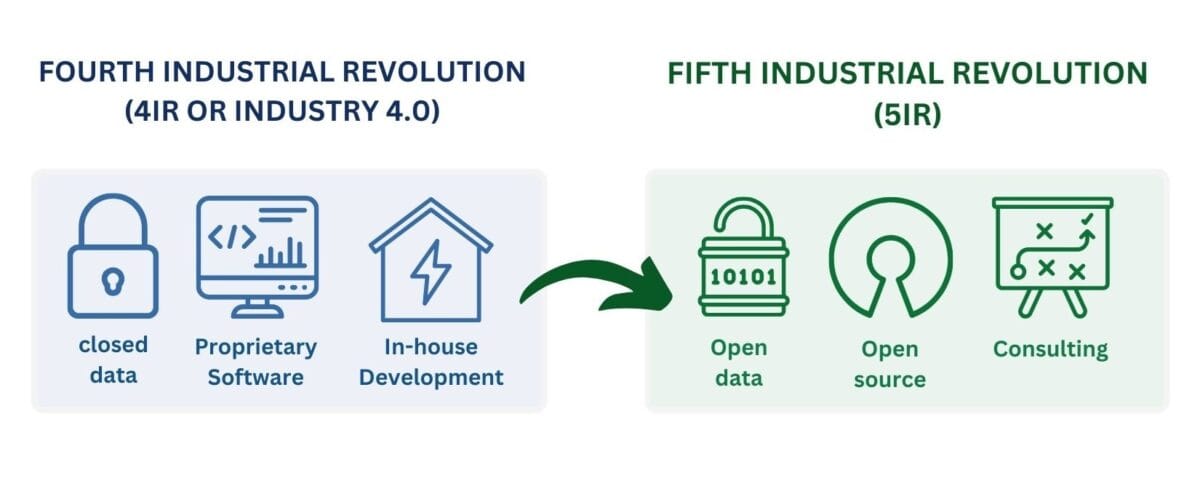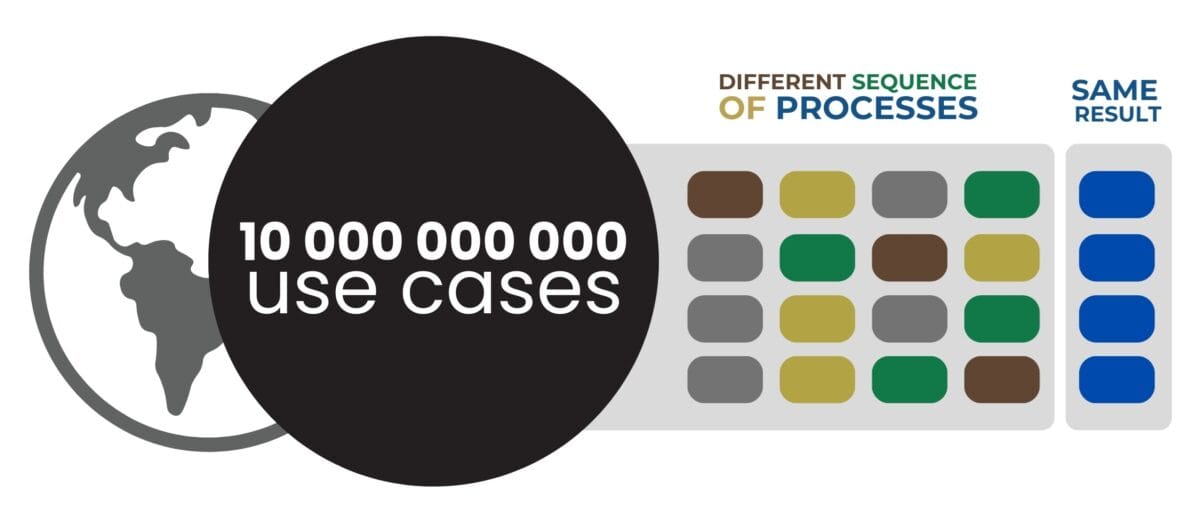Technological and economic patterns are theoretical concepts used to describe and analyze the evolution of society and economy at different stages of human development.
Fourth Industrial Revolution (4IR or Industry 4.0) is associated with information technology, automation, digitalization and globalization. The creation of proprietary applications, is part of this mode, as it involves software development, which is a key aspect of information technology.
Fifth Industrial Revolution (5IR) is a movement towards a more adaptable, flexible, and personalized economic activities, highlighted by an emphasis on customization, consulting, and service-oriented models. This shift prioritizes data-driven decision-making, necessitating the use of open data and transparent decisions. The focus is increasingly on the significance of services, the customization of products and a strong emphasis on knowledge and innovation.

The Fourth Economic Paradigm focuses on closed data, proprietary software, and in-house development, contrasting with the Fifth Paradigm's emphasis on open data, open source, and consulting
Even if a parameterized application or pipeline is created that is suitable for automating processes in 10 or 100 companies, there is a high probability that such an application or pipeline can hardly be used in other companies without necessary modifications.
If we look at the processes of different companies in a generalized conceptual form, it is true that the results of their work often seem to be almost identical. However, if you dig deeper into the logical and physical level, it becomes clear that even standard processes can differ significantly depending on the unique features and execution of sub-processes included in them in each particular company.
It is important to realize that successful integration of technology solutions in construction implies a deeply personalized approach to each process, project and company. This means that even after developing a universal framework, tool or program, it will require detailed adaptation and customization to meet the unique requirements and conditions of each specific company.
Given the scale of the global construction industry, it's safe to assume that there are billions of unique business cases, each with its own unique characteristics and requiring a customized approach.

All over the world, the construction industry handles a huge number of customized business cases
Customisation and consulting, which is in line with the fifth economic regime, will enable a shift towards more customised and knowledge-driven activities where, in a variety of scenarios and challenges, the ability of companies to not only adapt the use of open data and open solutions, but also to effectively analyse vast amounts of data to make informed decisions, will be a key success factor.
The construction economy will be moving into the fifth economic paradigm, where services and consulting will be prioritized over closed solutions with rigid use cases.
Data-driven decision-making and analytics are critical components that enable construction companies to not only improve efficiency and optimise processes, but also help anticipate trends, minimise risks and innovate to solve problems.
In the era of digitalisation and big data, in addition to making money from speculation, construction companies have a new source of efficiency gains - analytical tools and methodologies that will become an integral part of strategic planning and operational management in construction.

















